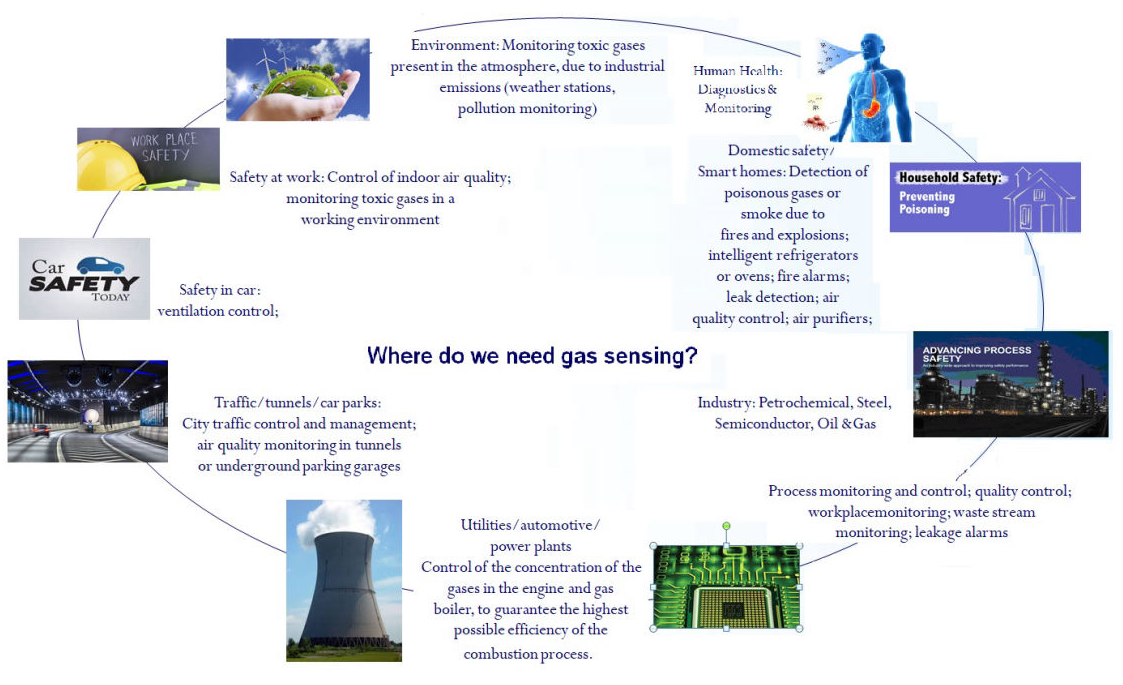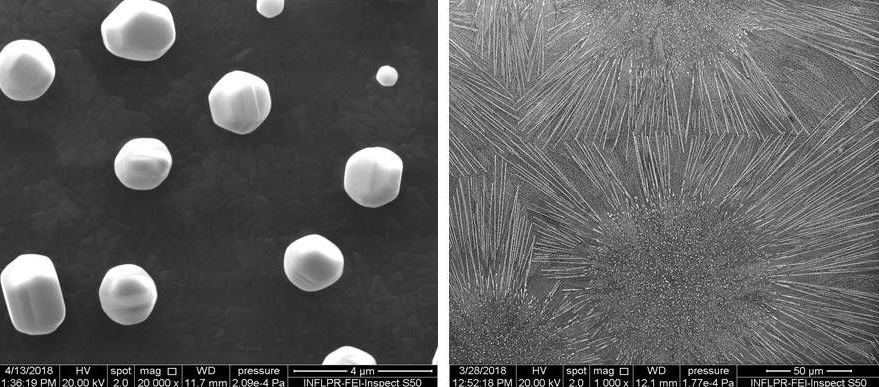Our specific goals include lowering the detection limit of our sensing devices towards the ppb range while maintaining confidence levels and response times. Lowering the response and recovery times is desirable together with improving the selectivity of the sensors. Last but not least, we aim at developing robust sensing devices that can operate in a broad range of real environmental conditions including extreme ones (variations in temperature and humidity, high levels of humidity, rain, wind, extreme temperatures, electromagnetic interferences, controlled artificial ventilations, hazardous environments). Extreme environmental conditions are known to represent a major challenge for gas sensing systems. For example, changes in temperature and humidity often lead to condensation which, in turn, impacts considerably on the accuracy of the measurements. Radiometric material properties such as reflectivity and albedo or material’s sensitivity to background illumination (e.g. night vs day or UV illumination) are further examples in this sense. Chemical and temporal stability are therefore essential as these dictate the reliability of the sensor and its lifetime. We are foreseeing the design and implementation of suitable accelerated aging test protocols for these purposes.

The demand for gas sensing technologies is highest in the following industrial areas: chemicals, oil and gas, environmental intelligent monitoring, automotive (e.g. NOx emissions), households, appliances and indoors intelligent monitoring, pharmaceuticals, healthcare, production processes and storage of food and beverages, agriculture, semiconductors.
Modern product requirements increasingly demand for rugged gas sensors, designed for a lifetime of up to 20 years, infrequent battery replacement and with energy harvesting capabilities. Cost-effectiveness for sensing devices and systems installed in industrial plants and remote areas imposes additional features like self-calibration and wireless communication. Prerequisites for deployment of gas sensing devices within industrial environments, state that sensors must operate within parameters without requiring calibration sooner than 30 days or replacement earlier than 2 years.
Complex detection devices commonly known as e-nose are increasingly gaining popularity in various industrial areas. E-nose systems are most commonly integrated into food processing lines or into those of the chemicals and pharmaceuticals industries. There is a big market for e-nose devices that monitor the shelf-life and the quality of perishable goods in supermarkets or storage facilities, as well as for those designed to detect the presence of contaminants and pathogens in milk, meat or eggs.
Preferential interest is given to ammonia, arsin, bromine, carbon dioxide, carbon monoxide, chlorine, chlorine dioxide, diborane, germanium tetrahydride, halocarbons and refrigerants, hydrocarbons, hydrogen, hydrogen sulphyde, vapors of mercury, nitrogen oxides, organic solvents, tetrachloroethylene, ethanol, oxygen, ozone, phosphine, silane, sulphur dioxide and water vapors.

Our lab features an in-house built setup for testing electrical gas sensors. The setup is structurally very simple and modular, yet very robust, allowing for reliable testing procedures.
